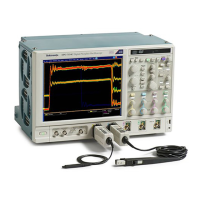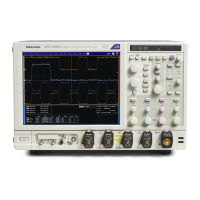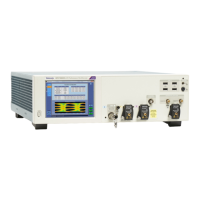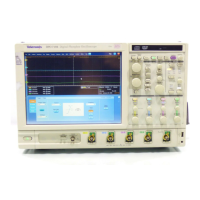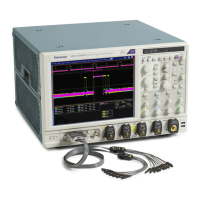Behavior
From this control window, you can do the following:
■
Define histogram measurements for the selected waveforms.
■
Select a waveform source using the Channels Selector. You can measure live waveforms, math waveforms, or reference
waveforms.
■
Create a list of measurements to appear in the main graticule or in a separate measurement window.
■
Define the unique reference levels for each measurement.
■
Use gating to limit the measurements to a specific area of the waveform.
■
Set up measurement statistics.
■
Set up histograms to evaluate specific regions of the waveform.
NOTE. Automatic measurements are not available on digital channels.
TIP. Turn on Fast Acquisitions to enhance your measurements. In Fast Acquisitions mode, measurements are calculated on an
array of acquired waveforms. As the waveforms accumulate (with persistence on), your measurement accuracy may increase.
However, only one or two channels can be displayed when you take automatic measurements using Fast Acquisitions mode.
If three or more channels are displayed, Fast Acquisitions mode is turned off, and then the requested measurements are made.
Fast Acquisitions mode is not automatically turned back on when you select fewer than three channels.
What do you want to do next?
Go to a step-by-step procedure to set up the instrument for taking measurements.
Set up histograms
From the Measure menu, select Waveform Histograms, or click the Histogram button in the Measurement Setup window.
Overview
Use the Histogram control window to set up a vertical or horizontal histogram. Use vertical histograms to measure signal noise
and horizontal histograms to measure signal jitter.
Measurement setups
292 DPO70000SX, MSO/DPO70000DX, MSO/DPO70000C, DPO7000C, and MSO/DPO5000B Series

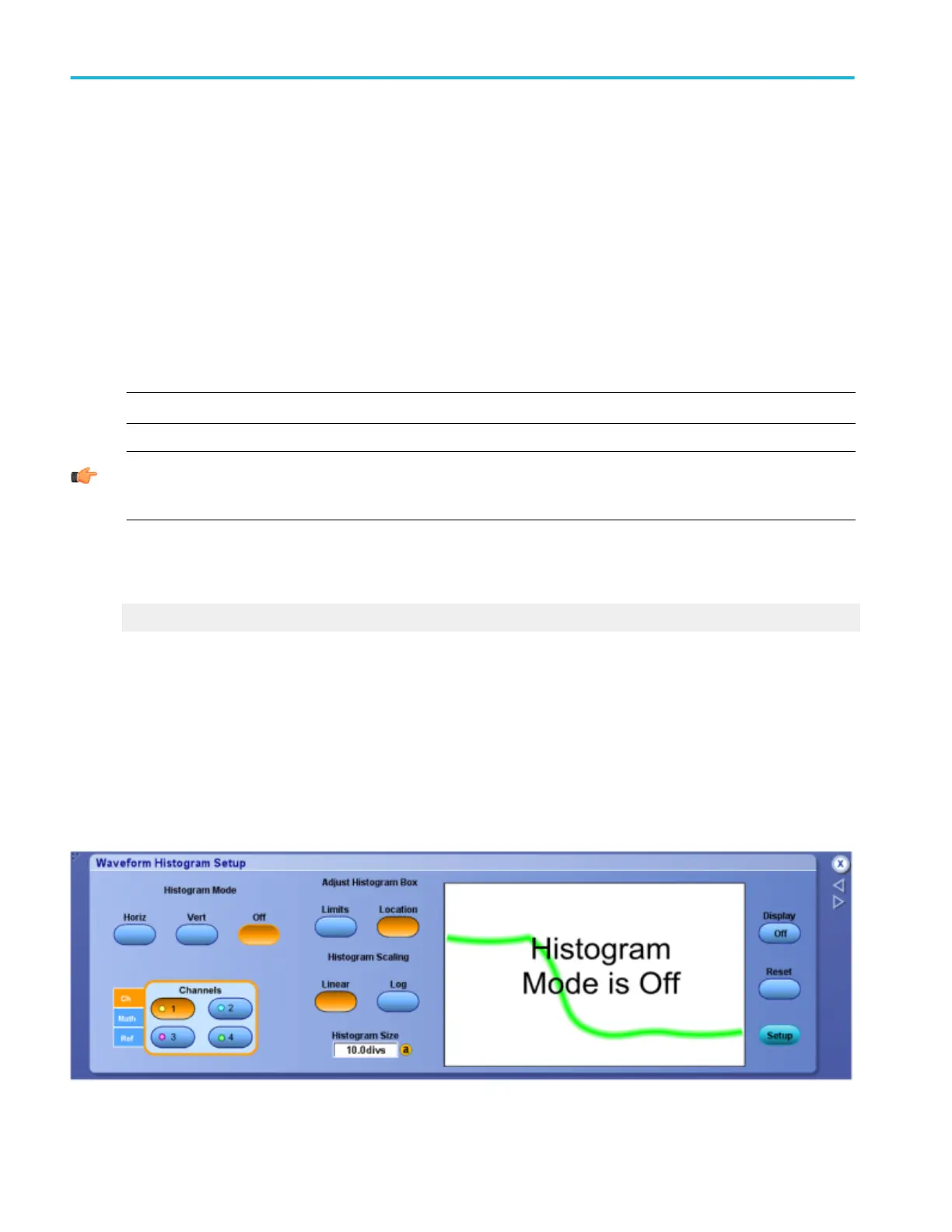